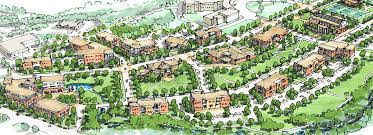Introduction
In the dynamic tapestry of urban development, the blueprint that guides the growth and evolution of our cities is often hidden within the intricate framework of Zoning regulations. Understanding and demystifying these regulations is key to fostering sustainable development, ensuring that urban spaces not only thrive economically but also prioritize environmental conservation and social well-being. This article aims to shed light on the vital role of zoning regulations in sustainable urban development.
Zoning Regulations: Guardians of Urban Order
Zoning regulations are the silent architects of our urban landscapes, dictating where residential, commercial, industrial, and recreational spaces can exist. These regulations serve as guardians of urban order, ensuring that the built environment aligns with the broader goals of a community. As we embark on a journey to demystify these regulations, it becomes evident that their significance extends far beyond mere land-use planning.
The Pillars of Sustainable Development
Sustainable development is a multifaceted concept that encompasses economic vitality, social equity, and environmental stewardship. Zoning regulations, when crafted with a sustainability lens, become instrumental in achieving these goals. By integrating sustainable practices into zoning codes, cities can create a framework that promotes responsible land use, energy efficiency, and social inclusivity.
Mixed-Use Zoning: Fostering Vibrant, Walkable Communities
One of the key strategies for sustainable development within zoning regulations is the implementation of mixed-use zoning. This approach encourages the integration of residential, commercial, and recreational spaces within the same area. By fostering mixed-use developments, cities promote vibrant, walkable neighborhoods, reducing the reliance on automobiles and enhancing the overall quality of life for residents.
Density and Transit-Oriented Development: Reducing Urban Sprawl
Zoning regulations play a pivotal role in determining the density of urban areas. Sustainable development often involves embracing higher-density zoning to reduce urban sprawl. This not only maximizes land use but also supports efficient public transportation systems. Transit-oriented development, encouraged by strategic zoning, promotes accessibility, reduces traffic congestion, and minimizes the environmental impact of commuting.
Green Spaces and Environmental Conservation
Incorporating green spaces into urban planning is a hallmark of sustainable development. Zoning regulations can mandate the inclusion of parks, green roofs, and other natural elements within developments. By doing so, cities enhance biodiversity, mitigate the urban heat island effect, and contribute to the overall well-being of residents. Zoning becomes a tool for creating a harmonious balance between concrete jungles and green oases.
Affordable Housing Mandates: Fostering Social Equity
Social equity is a critical component of sustainable development. Zoning regulations can be leveraged to mandate the inclusion of affordable housing units within new developments. This approach ensures that the benefits of urban growth are shared by a diverse population, preventing the displacement of lower-income residents and fostering inclusive communities.
Adaptive Reuse and Historic Preservation
Sustainable development is not solely about constructing new buildings; it also involves repurposing existing structures. Zoning regulations can incentivize adaptive reuse by offering flexibility in land-use designations. This approach not only preserves the cultural heritage of a community but also minimizes the environmental impact associated with demolition and new construction.
Smart Growth Technologies: Integrating Innovation into Zoning
Advancements in technology provide innovative solutions for sustainable urban development. Zoning regulations can be adapted to incorporate smart growth technologies such as energy-efficient building standards, smart grids, and intelligent transportation systems. By integrating these technologies into zoning codes, cities can optimize resource use, reduce energy consumption, and enhance overall urban efficiency.
Community Engagement: A Catalyst for Sustainable Zoning
Sustainable zoning is not a top-down process but a collaborative effort that involves community input. Engaging residents in the zoning process ensures that regulations reflect the values and aspirations of the community. By fostering a sense of ownership, cities can create zoning codes that resonate with the diverse needs of their residents, leading to more sustainable and resilient urban environments.
Challenges and Opportunities
While zoning regulations are a powerful tool for promoting sustainable development, challenges persist. Resistance to change, political barriers, and the need for ongoing adaptation pose hurdles to the implementation of progressive zoning codes. However, each challenge presents an opportunity for innovation and improvement, urging cities to continually refine their regulations in pursuit of a more sustainable urban future.
Conclusion
Demystifying zoning regulations reveals their transformative potential in shaping urban spaces for a sustainable future. From mixed-use zoning to affordable housing mandates, each facet of zoning codes plays a crucial role in fostering economic vitality, social equity, and environmental conservation. As cities navigate the complexities of urban development, a thoughtful and sustainable approach to zoning regulations emerges as a guiding light, ensuring that our urban landscapes evolve into thriving, inclusive, and resilient communities.



